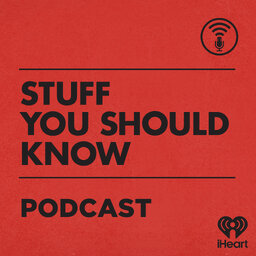Can NASA predict natural disasters?
The US has developed some great equipment for peering into deep space that can also be used to great effect when trained on Earth. Now NASA is using satellites to track natural processes around the globe in an effort to better predict natural disasters like hurricanes and volcanoes.
Learn more about your ad-choices at https://www.iheartpodcastnetwork.com
 Stuff You Should Know
Stuff You Should Know


